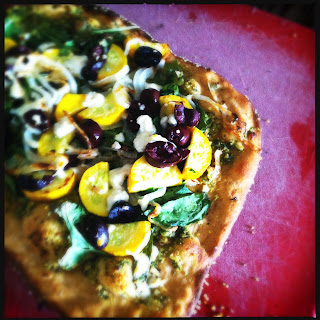The
idea of this post is simple, so I want to keep this description short
and sweet. If you like bread, but sometimes hate the thought of turning
on your oven and waiting one whole
hour for your bread to be golden and delicious (and that’s if you’re
making quick bread), this recipe is for you. Get out your food
processor, throw in five ingredients I guarantee are already in your
cupboard (well, maybe not the white whole wheat flour, but keep reading
to find out why it should be), form adorable little bread patties, and
cook them in a skillet. About 20 minutes later, sit down to fresh
bread. Done.

I
do want to make a quick mention about the white whole wheat flour I
chose to use in this recipe because I have tried a number of
combinations and this one consistently yields the best results. The
original recipe calls for all-purpose flour, but I tend to go to great
lengths to to avoid refined grains (which mostly means that I ruin a lot
of perfectly wonderful recipes by substituting whole wheat flour for
the all-purpose). Having tried other combinations of whole wheat flours
for this bread, I think I have finally settled on white whole wheat
being the best option. This flour produces a light, fluffy bread,
whereas regular whole wheat yields a very dense bread that feels like
work to consume. So, what makes white whole wheat white?
Well, it’s simple really: the flour is made from white wheat berries.
Regular whole wheat, on the other hand, is made from the red wheat berry
and is much darker in color than white whole wheat. Both flours,
however, retain the outer bran layer of the wheat berry that is lost in
the refining process of all-purpose flour. The bran is where most of
the nutrients and fiber of the wheat berry are found, so it’s such a
shame when the bran stripped away through refining. If you are wary of
switching to whole wheat, I recommend starting with white whole wheat
because its mild flavor makes it an easy substitution for all-purpose
flour.
Olive Oil Salt Skillet Bread
adapted ever so slightly from Mark Bittman’s How to Cook Everything
makes 6 2-inch rounds of bread, or 1 8x4 inch loaf
This
recipe is halved from the original printed recipe, so it serves three
people (perfect if you are cooking for one or two and want leftovers),
but if you’re feeding a crowd then definitely double these amounts. The
bread is best right off the stove, but I tend to keep mine at least a
couple of days loosely wrapped in wax paper. Allow the pieces to cool
completely before storing.
I
am only going to give detailed instructions for the skillet method
here, but if you feel like baking, turn on your oven to 375 and bake the
bread for 25 minutes covered with foil, remove the foil and sprinkle
with coarse salt, then continue baking (uncovered) for 20 minutes more.
Lastly, even if you do not have a food processor, skillet bread is not out of reach! The food processor definitely makes life easier, but the dry ingredients can easily be mixed in a bowl and the wet components mixed in. You will need to turn the dough out onto a very lightly floured cutting board to knead for a minute or two, just until the dough forms a cohesive ball.
1 ½ cups white whole wheat flour
½ tbsp. baking powder
½ tsp. coarse salt, plus more for sprinkling (I used kosher)
just over 2 ½ tbsp. olive oil, plus a bit more for the pan (the original recipe calls for ⅓ cup, so this is approximately half)
½ cup warm water
In
the bowl of a food processor, pulse together flour, baking powder and
salt. With the machine running, slowly add olive oil through the feed
tube. Slowly pour in the water through the feed tube and mix until a
ball forms. The dough should be cohesive and only slightly sticky to
the touch. In other words, very easy to handle. This is what mine looked like:
Separate
the dough into 6 pieces, each about ½ inch tall, and sprinkle the tops
with coarse salt. Heat a drizzle of olive oil in a pan over medium heat
(I used a non-stick pan so I did not need much oil, but use more if you
are using cast iron or something similar). When the pan is fairly
warm, add a few of the dough rounds (salt-side up) without crowding the
pan (I cooked mine in two batches). After 5 minutes check each piece
for browning and flip if needed (the recipe says 5 minutes, but mine
took more like 8 ½ minutes on the first side). The bottoms should be
golden and the tops should be puffed up a bit. Cook another 5 minutes
or so on the other side, but be aware that this side will mostly likely
cook a bit faster than the first.
Serve bread warm.
















